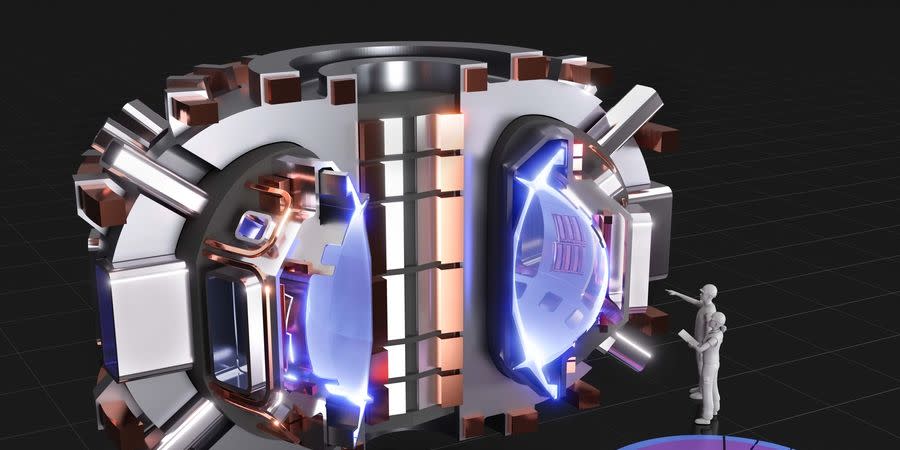MIT Is Joining Forces With a Bill Gates-Backed Startup to Bring Fusion to the Masses

A tokamak designed at MIT works by using proprietary superconducting magnets.
Students will continue to refine the tokamak by working with Commonwealth Fusion System.
There are still many questions to answer about how the tokamak will succeed—like how to build a reactor that can handle extreme heat.
An MIT spinoff partly funded by Bill Gates signed a new agreement last month to continue its nuclear fusion research for at least the next five years in a bid to make commercial nuclear fusion a reality.
The Commonwealth Fusion System (CFS), named for the Commonwealth of Massachusetts, will continue its established collaboration with MIT’s Plasma Science and Fusion Center (PSFC), a research lab devoted to the study of plasmas, fusion science, and technology. This type of partnership style is pretty common in cutting-edge scientific research where there are patents and proprietary technologies at play.
⚡️ You love energy. So do we. Let’s nerd out over it together—join Pop Mech Pro.
CFS and MIT have collaborated for years on research surrounding a superconducting magnet they believe will make it possible to reach the ignition threshold for nuclear fusion energy. Last September, the partnership achieved the most powerful high-temperature magnetic field ever created on Earth, using the high-temperature superconducting electromagnet to create a field strength of 20 teslas.
The magnets go into a device called a tokamak, which is a space-age reactor that uses an astonishing amount of energy in an effort to produce at least slightly more energy than the machine consumes. A tokamak is a donut-shaped or spherical reactor in which a stream of plasma is swirled. The plasma is far too hot for a traditional material to contain, so a powerful magnetic field holds it in place. This is where CFS’s superconducting magnets come in, because electromagnets use a lot of power in tokamak designs. A superconducting magnet is one that operates without any resistance, which could cut down on the amount of power required to hold the magnetic field together.
There’s still a high energy cost, though, because the magnets must be cooled to extremely low temperatures in order to operate. This helps to explain why, despite efforts around the world on a variety of scales, nuclear fusion has yet to generate more energy than it requires to power these complex tokamak machines. All nuclear fusion technologies rely on some kind of extreme in temperature, in pressure, or in speed, matching the conditions in which fusion naturally occurs in outer space.
Companies like CFS are often started at research institutions or even government laboratories; that’s because these lab like to focus on developing new ideas and giving researchers something to study firsthand. Startup companies that aren’t in the business of conducting scholarly research typically end up handling the nitty gritty of turning those cutting-edge ideas into, for example, commercial power plants.

In this case, the partnership is a bit of both, with MIT supplying a steady stream of graduate students and postdocs who want to work on the continuing refinement of CFS’s tokamak technology. “CFS will build [the tokamak] SPARC and develop a commercial fusion product, while MIT PSFC will focus on its core mission of cutting-edge research and education,” PSFC director Dennis Whyte says in a statement. Whyte is a nuclear physicist whose work at MIT is the basis for SPARC.
While the kernel of that work is established—the fusion reaction, the idea of the tokamak, and CFS’s superconducting magnets—much of the logistics remains to be worked out, like how to build a commercial reactor whose materials will be able to transfer the extreme heat.
You Might Also Like
